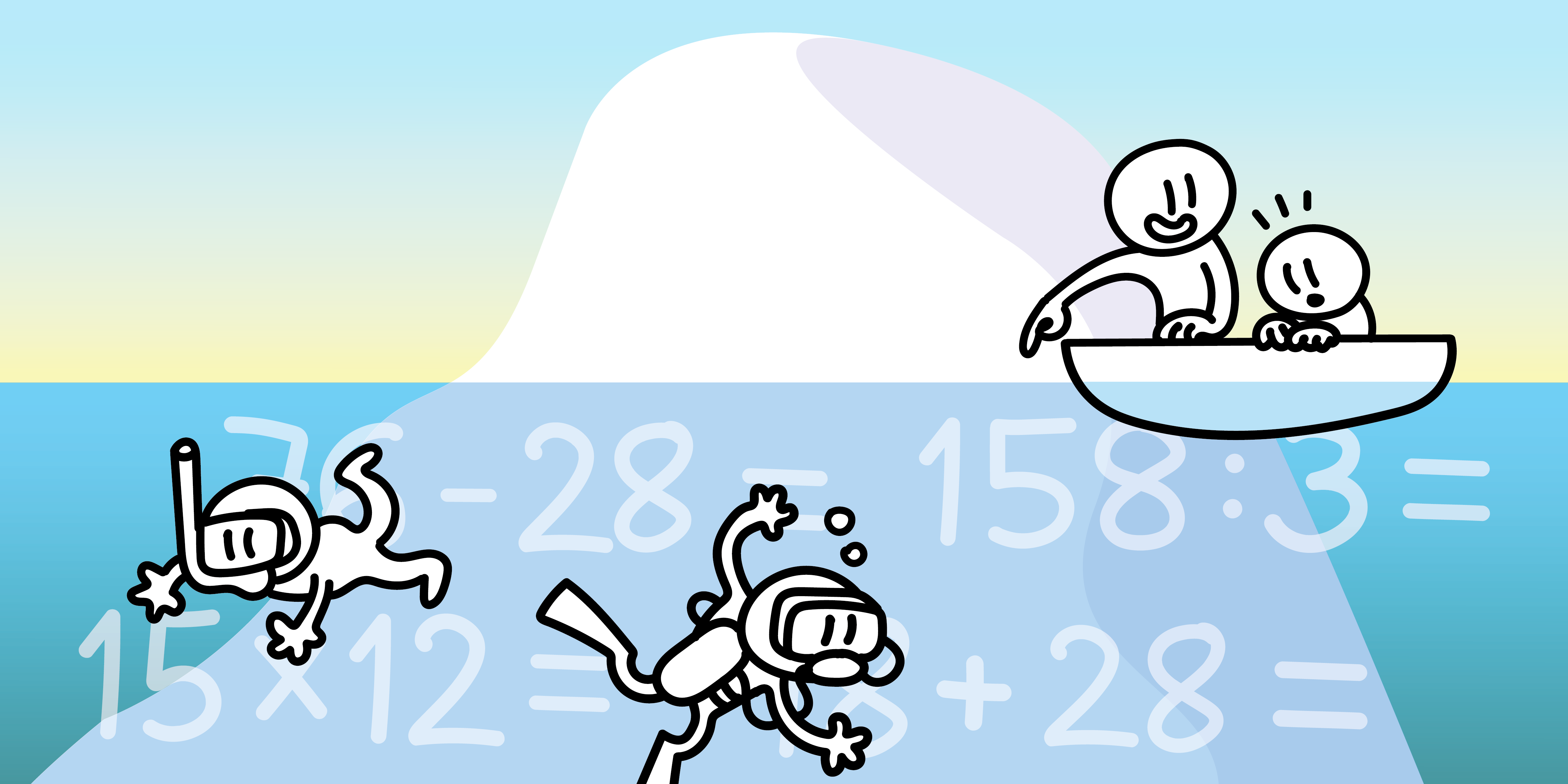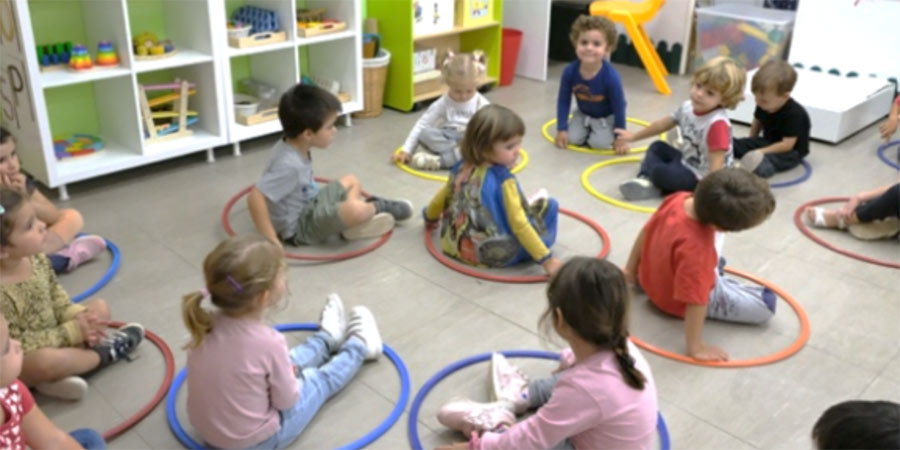In the world of education, the acronym STEM (science, technology, engineering, and mathematics) has gained great importance in recent years. This multidisciplinary approach aims to encourage the understanding and the application of these four disciplines in different projects and activities. This in turn challenges students to solve complex problems and find creative solutions. Although the concept of STEM may seem new, it has a long history.
At Innovamat, as experts in mathematics teaching, we are particularly interested in the role math plays in STEM activities. We believe that math is a discipline which is just as important as the others, as well as a way to understand the world. We want to give math the importance it deserves, and change the mindsets of those who consider it a simple tool.
We are making progress. But first, let’s talk more in-depth about STEM.
Let’s go!
Table of contents
The origins of the concept of STEM
We will go back in time to the mid-20th century in the United States. The term STEM first appears in a U.S. Defense Ministry document. The US advocates for STEM education in order to remain a competitive country at a time when, after World War II, national security was of great importance.
STEM in education and literacy
Despite this political origin, when STEM was introduced in educational contexts, its conceptual meaning has been kept but the objective changed. STEM literacy aims to overcome the ethnic, gender and socioeconomic inequalities, which are common in the science-related occupations, by creating an inclusive and diverse learning environment.
According to Digna Couso, STEM literacy means “being able to analyze complex problems in order to find creative solutions by using key knowledge and competencies in engineering, science and mathematics.” Moreover, Couso argues that technology is the result of engineering; it not a new way of thinking or doing things, nor is it new content.
Quality STEM literacy is not only associated with incorporating science, technology, engineering, and math as subjects, but also with promoting important values and essential general skills, which are crucial in the future of students. Let’s explore these aspects in more detail: the specific competences STEM subjects offer, other general competencies and values.

Specific competencies
When we talk about promoting scientific vocation, we do not mean that students should study science, but that they develop scientific skills. In math, for example, students work on processes such as problem-solving, reasoning and mathematical proof. On the other hand, in science or engineering, others skills such as modeling, arguing, creating and investigating are more prominent.
In a STEM project, after learning and observing, students will have to decide when they should think as a scientist, as an engineer or as a mathematician. It is impossible to think as all three at once. This is because what is valued in one area may not always be valued in another. Every discipline has a specific purpose, so it is the teachers’ job to guide the students when making this decision.
General competencies
In 2017, the Unesco International Office for Education published the report Future Competencies and the Future of Curricula, which revealed seven future in-demand competencies linked to “professions of the future” and the use of technology. Among these competencies, we can find skills such as the interactive use of tools and resources, interaction with others (teamwork, negotiation, etc.) and how we interact with the world around us. STEM projects, therefore, offer a well-rounded context where students can develop these competencies.
Values
Finally, we can’t forget the importance of values in STEM literacy. Science has been the subject of moral debate throughout history, and students need to be aware of this.
Take the film Oppenheimer as an example. It is a true story, based on the creation of the atomic bomb. Faced with a complex problem, such as war, scientists, mathematicians and engineers work together to find a creative solution, which in this case is an atomic bomb. Thus, the competencies from all the different STEM disciplines come into play: physicists develop a theory, mathematicians model the situation and make predictions, and engineers build the bomb.
To this end, we can encourage students to develop their critical thinking and educate them by having a strong focus on values. We can ask them, for example: “Do we want to make a tool that can harm so many people? Can we think of another solution to the problem?”


What is the role of mathematics in a STEM project?
If we asked different professionals in the scientific world “what does mathematics mean to you?”, many would answer “a tool.” Unfortunately, in the world of STEM, mathematics has not always been as highly regarded as engineering or science. It is true that math helps us in many circumstances, but it is much more than a tool. Math itself is purposeful, and it is an exciting world for those who are passionate about it. It is an approach to life, a system which has always helped conform humanity’s cultural legacy, everywhere. In order to break away from the utilitarian concept of mathematics, it is necessary to spread the idea that math stands out in and of itself.
Here we can open up a world of questions about how to use math in STEM. Can we teach STEM with a strong emphasis on math? Can mathematical knowledge be built by connecting mathematics to science?
The Innovamat curriculum includes STEM activities, because we believe they stimulate the development of mathematical content and processes.
For example, in 8th grade, we have planned a statistics project in the context of a paper airplane contest. The project uses statistical concepts such as the measure of central tendency and dispersion to analyze various aircraft launches under different conditions. Students have to choose the best type of launch for the paper airplane contest. Try it with your students and tell us what you think!
We also recommend the 7th grade session entitled “An Egg or a Chestnut?”, where students develop geometrical concepts to analyze the shapes of eggshells. Students are given a scientific paper and manipulative constructions, and based on that they discover circles, ellipses, ovals, and the surfaces of revolution.
Thus, mathematics, beyond its usefulness as a tool when applied directly, also promotes understanding of the underlying processes in each STEM project. Focusing on this discipline can help students to identify and use the mathematical processes they are learning, facilitating a deeper understanding and opportunities to apply these skills. Let’s vindicate the role of mathematics!






